#Jannat al-Baqi
Text
On this day (March 3, 1924 CE {26/27 Rajab, 1342 AH}) - exactly 100 Gregorian years - the Ottoman Caliphate was officially abolished by the newly founded Turkish Republic under Mustafa Kemal (more popularly known as Atatürk).
The last Ottoman Caliph (pictured) - Abdülmecid II - was sent into exile in France along with the rest of the family of the House of Osman.
------
Osmanli Tarihi Arşivi (Ottoman History Archive):
Let us venture back in history; the year is 1924 and it is sometime after midnight.
A single light, coming from the library is still on in Dolmabahçe palace. There, an old man sits quietly and reads the Qur'an, pondering over the state of his nation.
His name is Abdulmecid II and he is the 116th Caliph of Islam. Two years prior, his cousin Sultan Mehmed Vahdeddin VI had been exiled to Italy and the Ottoman Sultanate had been abolished by the Grand National Assembly of Turkey.
On the night of March 3rd, a young army messenger opened the door to the library. The Caliph continued to read the Qur'an and the messenger was initially taken aback by the sight, but he forced himself to read out the proclamation from the Grand National Assembly of Turkey.
The Caliph refused to leave Istanbul, but his staff were worried that they would all be killed by the army who had now surrounded the palace and had him and his family at gunpoint.
After weighing the few options he had, he reluctantly packed some of his clothes and went into exile. Before dawn prayer, the Caliph was taken to the Çatalca train station where he and his family were put on the Orient Express bound for Switzerland.
An envelope containing £2000 was given to Abdulmecid Efendi. The station master quickly ushered the Caliph and his family into his small house adjoining the train station to shelter them from the cold on the platform while they awaited the train.
As they drank tea, the Caliph thanked him for his hospitality. The station master - a Jewish man - began to cry. “How can you thank me?” he asked. Instead, he in turn thanked the Caliph for the honour of being able to serve him even if for a brief moment.
In the morning, the population awoke to the news in shock - the Caliphate had been abolished. There were isolated riots and uprisings in various places, but the army put them down.
The last Caliph spent his days walking along the promenade in Paris, France. There, he lived a quiet life until he died in 1944 CE during the Nazi occupation of France.
As no Caliph had ever been buried in non-Muslim lands, Abdulmecid II's body was eventually transported to, and buried in Jannat Al-Baqi cemetery in the blessed city of Madinah, Arabia. The major political and spiritual office of Caliph had also been buried with him as well.


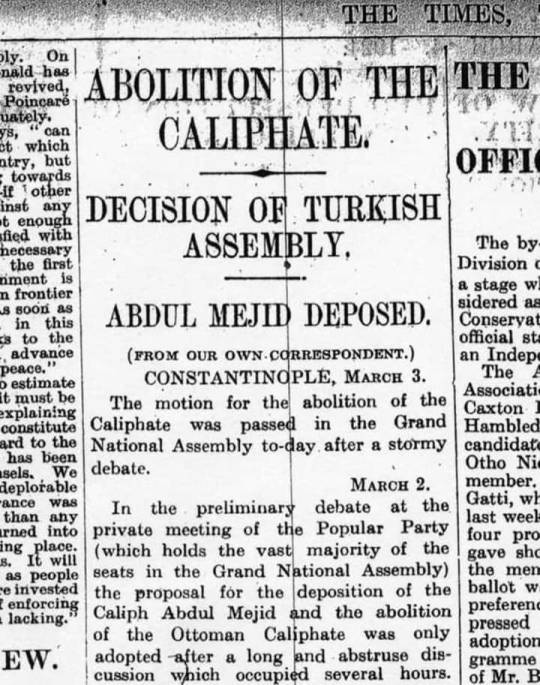
2 notes
·
View notes
Text
🍃🥀🍃 A Short Biography Of Lady
Ummul Baneen (as) 🍃🥀🍃
🥀 SHAFAQNA – Some years after the martyrdom of Hazrat Fatima al-Zahra (sa) Imam Ali (as) expressed his desire to his brother Aqil bin Abu Talib (as) to marry a woman of a brave tribe. Hazrat Aqeel was a very knowledgeable in tribe genealogy and he immediately proposed the name of Hazrat Fatima binte Hazam bin Khalid (sa) and the marriage took place soon after.
🥀 Much earlier during 8 A.H., Imam Ali (as) had been given the prophecy by Prophet Muhammad (S) of a brave son who would be martyred alongside with his brother Imam Hussain (as) on the day of Ashura. Ever since then, Imam Ali (as) had been waiting for the birth of that son which came in the person of Hazrat Abbas (as)
🥀 The woman, who bore and brought up that Hero Hazrat Abbas (as) the standard-bearer to Imam Hussain (as) was Ummul Baneen (sa). She was the daughter of Hazam ibn Khalid and wife of Imam Ali (as). She was from the courageous family of Bani Kalab. Her maiden name was Fatima, but when she bore Imam Ali (as) four sons she was called Ummul Baneen mother of sons only.
🥀 Ummul Baneen (sa) had such sincerity toward the Holy Prophet’s progeny that she loved Imam Hussain (as) more than her own children. A feeling which was from the bottom of her heart, It was to the extent that when she received the news stating the martyrdom of her four children, she said: “Tell me about Hussain (as) and when she received the news of Imam Hussain (as) martyrdom she said: “All of the arteries of my heart are torn. May all of my children and whatever that exist under this azure heaven be sacrificed for the sake of Imam Hussain (as).
🥀 Ummul Baneen (sa) gathered women of Madinah in her house and all cried for the martyrdom of Imam Hussain (as) was the first ever Majlis conducted after the martyrdom of Imam Hussain (as)
🥀 After the arrival of Imam Sajjad (as) and Lady Zainab (sa) in Madinah Hadrat Ummul Baneen (sa) used to continuously gather women in her house and narrate to them how Imam Hussain (as) and his companions were martyred by Yazidi forces.
🥀 Hazrat Ummul Banin (sa) was a great poetess and she is considered as the first Noha - lamentation poetry - reciter for the martyrdom of Imam Hussain (as). She used to visit regularly the famous Jannat ul-Baqi cemetery in Madinah and recite her Nohas in a very sad voice that everybody present there used to weep bitterly
🥀 She transformed the Jannat ul-Baqi cemetery in Madinah as “the Centre of Azadari of Imam Hussain (as). The Nohas recited by Hazrat Ummul Baneen (sa) was for the martyrdom of Imam Hussain (as) are recorded in history and are considered as masterpieces in Arabic literature.
🍃🥀🍃 shafaqna.com 🍃🥀🍃
.

#ahlulbayt#ahlulbait#imam husayn#imam hussain#imam mahdi#islam and shia#shia islam#islamquotes#prophet muhammed pbuh#fatima zahra
6 notes
·
View notes
Text
9 questions to ponder on:
Q1) Are some of our actions not shirk?
Eg1 Do we do sujood to a grave (other than for thanking God for the opportunity of performing ziyarat)?
Eg2 Do we ask an Imam a.s directly for our duas (rather than ask God only or through his special creations)?
Q2) Do we remember in 2006 and then again in 2007 the attacks on al-Askari mosque, Samarra?
Q3) Do we condemn the Saudis for their 8 Shawwal 1925 actions when they demolished the holy shrines of the family of Holy Prophet saww & companions in Jannat-ul-Baqi' in Madina?
Q4) Do you know when I went to the religious office in Madina al Munawarah mosque discussing Islam, I was told "if it wouldn't cause fitna in the ummah, we would have destroyed the shrine of Prophet saww"!
Q5) Do we forget Nabi Ibrahim a.s wife Hajar and son and 70 Prophet saww are buried in the semi circle arc next to the Kaba that we pray to some may claim!
Q6) Have we read s18 v21 about building a mosque on the People of Cave:
"..Build an edifice over them-- their Lord best knows them.."
Q7) Do we look at ourselves too, IF our own actions also destroy the message of Ahlulbayt a.s who are buried in Baqi?
Q8) Do we may condemn those who took Fadak from Lady Fatima s.a (also buried in Baqi as 1 possible location) but then dont pay khums?
Q9) Do we condemn those who pushed the door on Lady Fatima s.a, but then partners think its ok to harm/beat/lay a finger on their partner, with cases from our communities today. Who do we think we are?
Again let's ask ourselves, when we condemn the destroyers of Baqi or Samarra, are we condemning ourselves too thru our actions?
Ponder on it
Salawat x3
3 notes
·
View notes
Text

Jannat ul-Baqi' (جَنَّة ٱلْبَقِيع), Masjid al-Nabawi (The Prophet's Mosque), Medina, Saudi Arabia 🇸🇦
3 notes
·
View notes
Text
In a first, Saudi allows Shia pilgrims to visit Jannat Al-Baqi
Riyadh: Saudi Arabia has allowed Shia pilgrims to visit Jannat Al-Baqi cemetery in Madinah.
The restrictions have been eased during this year’s Haj from June 23 to July 1, Islamic Republic News Agency (IRNA) reported on June 11.
As per the reports, male Shia pilgrims from Iran were allowed to visit the Al-Baqi cemetery.
They were able to recite religious prayers or eulogies that had previously…
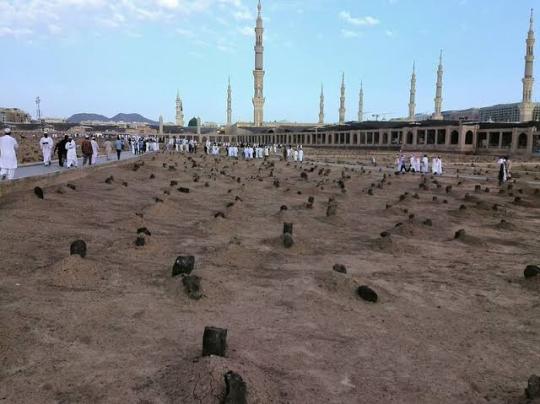
View On WordPress
0 notes
Text

Entri 4: Tokoh Agama
Assalamualaikum dan selamat sejahtera para pembaca sekalian.
Pada hari ini, saya ingin kongsikan tentang seorang tokoh agama yang sangat saya kagumi iaitu Sayyidatina Aisyah R.A. Beliau merupakan isteri Rasulullah S.A.W yang banyak meriwayatkan hadis baginda serta menjadi peneman baginda sehingga ke medan perang.
Aisyah binti Abu Bakar dilahirkan di Mekah pada 610 Masihi. Beliau merupakan anak kepada Abu Bakar As-Siddiq yang menjadi khalifah pertama (632-634M) dan sahabat Rasulullah S.A.W yang paling akrab. Ibunya pula bernama Ummu Rumman binti ‘Amir.
Aisyah R.A. bukan sahaja dihormati dek akhlak dan budi pekertinya yang mulia, namun beliau juga seorang wanita yang bijaksana. Beliau mempunyai banyak ilmu dalam bidang fiqh, faraid, tafsir, serta hadis.
Beliau dilamar oleh Rasulullah S.A.W pada usia 6 atau 9 tahun, dan majlis perkahwinan mereka diadakan dalam bulan Syawal pada tahun kedua Hijrah. Selain Sayyidatina Khadijah, Aisyah R.A. merupakan isteri yang paling utama disisi Nabi Muhammad S.A.W. Beliau menggalas tugas sebagai pembantu peribadi baginda dalam semua urusan termasuklah berdakwah dalam menyebarkan Islam.
Beliau juga pernah berkhidmat di medan perang bersama suaminya dalam Perang Uhud dan Khandaq. Dalam pada itu, beliau juga antara orang yang paling banyak meriwayatkan hadis Rasulullah S.A.W. iaitu sebanyak 210 hadis.
Aisyah R.A. wafat pada 17 Ramadan 58H, bersamaan dengan 16 Julai 678M. Beliau berusia 67 tahun. Beliau selamat dikebumikan di makam Jannat al-Baqi’.
Sekian sahaja kongsian saya pada hari ini. Sama-samalah kita hadiahkan Al-Fatihah buat wanita hebat yang menjadi salah satu tokoh agama kita ini, di samping berdoa agar kita diberi syafaat oleh Rasulullah S.A.W di akhirat kelak. Amiin.
Salam sayang,
H.
0 notes
Photo

2️⃣8️⃣ SAFAR UL MUZAFFAR YOUM-E-SHAHADAT 1394 URS-E-MUQAADAS 🌹NAWASA-E-RASULﷺ 🌹Hamshabih-E- Mustafaﷺ 🌹Sibt-E-Payambbarﷺ 🌹Jaanasheen E Murtuza 🌹SHAHZADA-E-MAULA ALI (Karam Allahu Wajhul kareem) 🌹Jigar Gosha-e-Batool 🌹Noore Chashme Khatoon-e-Jannat (Salamullahi Alaiha) 🌹Khalifat-ul-Muslimeen 🌹Khatim-E-Khilafat-E-Rashida 🌹Sayyadus Saadat 🌹Sayyade Shabab E Ahle Janna 🌹Shahid Ibne Shahid Imaam E Sidq O Safaa 🌹Tajdar E Auliya 🌹Paikar-E-Sabro Raza 🌹Mahboob-E-Khuda 🌹Imamul Muslimeen 🌹Amirul Mo'amineen ❣️❣️SARKAR SAYYIDUNA IMAM HASAN AL MUJTABA ALAIHISSALAM ❣️❣️ (Jannatul Baqi, Madina Sharif, Saudi Arab). ● SHAAN E IMAM HASAN E MUJATABA A.S.● Woh Hasan al-Mujtaba Sayyid al-Askhiya Woh Hasan al-Mujtaba Khatam al-Khulafa Woh Hasan al-Mujtaba Imam al-Awliyah Woh Hasan al-Mujtaba Jānashīn-e-Mustafa Woh Hasan al-Mujtaba Ibn-e-Murtaza Woh Hasan al-Mujtaba Nūr-e-Nazar-i-Zahra Rākib e Dosh e Izzat Pe Lakhon Durood O Salaam ♥️ . . . . . . . . #allah #muhammad #fatima #karbala #imamhussain #imamali #imamhasan #ahlebuyt #najaf #ali #yahussain #hussain #deen #labbaikyaabbas #muharram #mecca #madinah #pakistan #ahlebait #quran #allahuakbar #imamzainulabideen #labbaikyahussain #bibizainab #jannatulbaqi #yaabbas #islam #imamreza #masjidalnabwi @auliaehind @aurangabad.sufis @follow_sufism (at Jannat Al Baqi) https://www.instagram.com/p/Ci7D7BxtlLr/?igshid=NGJjMDIxMWI=
#allah#muhammad#fatima#karbala#imamhussain#imamali#imamhasan#ahlebuyt#najaf#ali#yahussain#hussain#deen#labbaikyaabbas#muharram#mecca#madinah#pakistan#ahlebait#quran#allahuakbar#imamzainulabideen#labbaikyahussain#bibizainab#jannatulbaqi#yaabbas#islam#imamreza#masjidalnabwi
1 note
·
View note
Photo

Jannat al-Baqīʿ, Madinah, Saudi Arabia
70 notes
·
View notes
Text
Jannat al-Baqi
Jannat al-Baqi is also known as Baqi al-Gharqad, which means “Baqi of the Boxthorn. The graveyard holds much meaning. It contains many of (محمد,صلي الله عليه وسلم) families and friends.

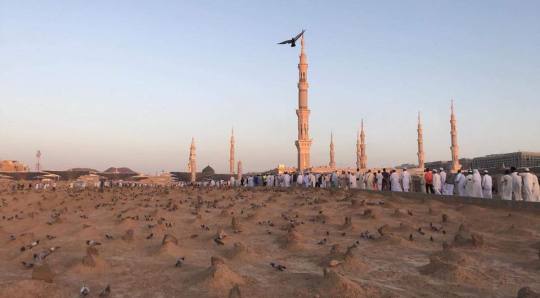

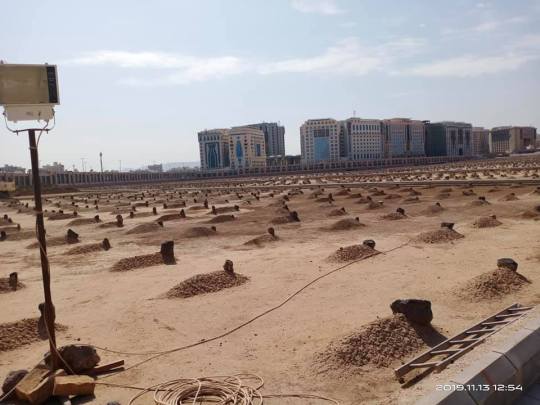

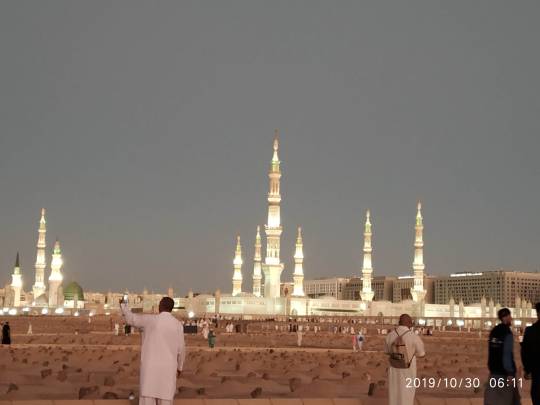


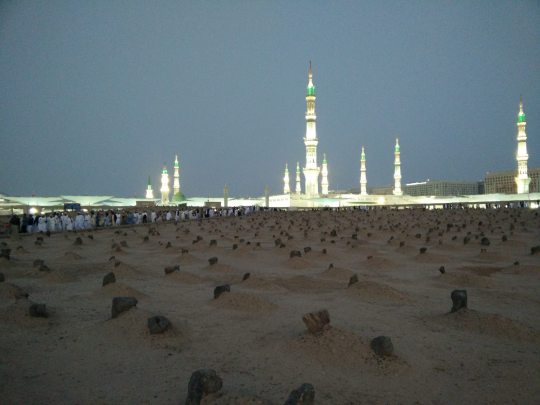
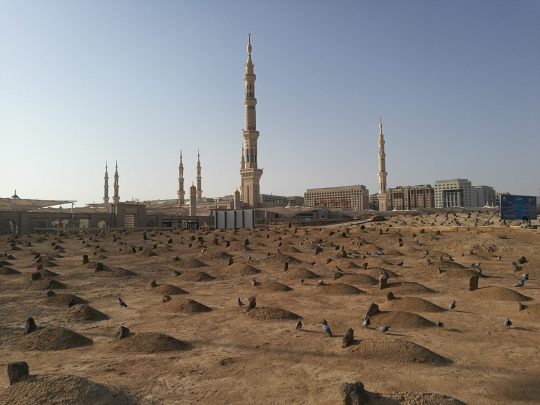
0 notes
Text
💐Mawlud Imam Al Hassan Al Mujtaba (as)💐
اﻟﻠﮭﻢ ﺻﻞ ﻋﻠﯽ ﷴ وآل ﷴ وﻋﺠّﻞ ﻓﺮﺟﮭﻢ
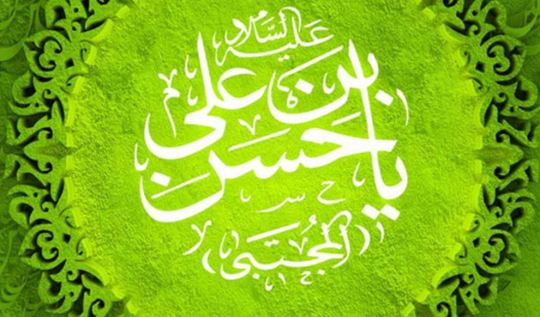
🌹 🌹 🌹 My sincerest congratulations to the Imam of our Time (atfs), Our Holy Prophet Muhammad (saws), Imam Ali Amir Al Momineen (as), Sayeda Fatima Al Zahra (as), Imam Al Hussain (as), Sayeda Zainab (as), Sayeda Umme Kulthoom (as), and the Ahlul Bayt (as) and all lovers and followers of the Ahlul Bayt (as), as we celebrate the Birth Anniversary of Imam Al Hassan Al Mujtaba (as) born on the auspicious 15th Ramadan 🌹 🌹 🌹
اﻟﻠﮭﻢ ﺻﻞ ﻋﻠﯽ ﷴ وآل ﷴ وﻋﺠّﻞ ﻓﺮﺟﮭﻢ
Imam Al Hasan (as) was the eldest grandson of the Prophet Muhammad (saws), who declared that Imam Al Hasan and Imam Al Hussain are the two Chiefs of Youth in Paradise.
May Allah (swt) pour curse upon curse on all those who usurped the right of Muhammad (saws) and Muhammad’s Household (as) and to the last follower who acceded to this deed.
#Imam Hassan Ibn Ali#imam hassan al mujtaba#shahr ramadan#month of#ramadan#mawlud#mawlud imam hassan#as#islam#salutations#salawat#ahlul bayt#Prophet Mohammad#saws#imam ali#imam hussain#sayeda fatima al zahra#sayeda zainab#jannat al baqi#birthday#lok#lionofkarbala
8 notes
·
View notes
Photo
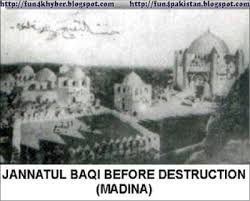



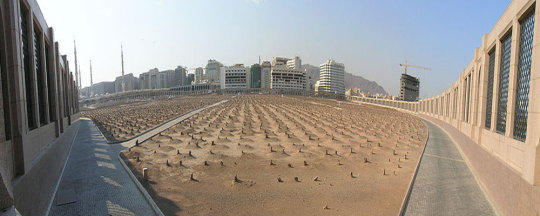

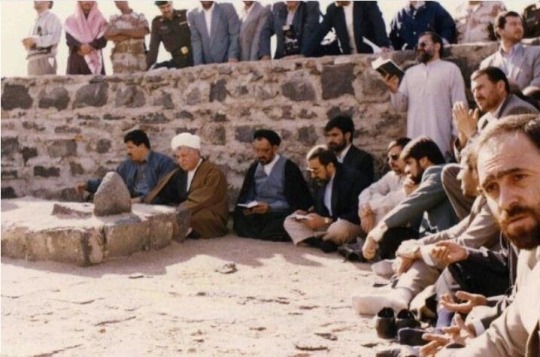



Jannat al-Baqi
10 notes
·
View notes
Text
Yaum-e-Gham
The 8th of Shawwal 1345 AH (21st April 1925), marks the date on which the shrines and mausoleums of Jannat ul-Baqi in Medina were destructed by King Ibn Saud لعنت اللّہ.
Also in the year 1925, he demolished the tombs and shrines of Jannat-e-Mualla in Makkah where many of the Holy Prophet's ص relatives, including his ص father, mother and wife, are buried.
The word 'al-Baqi' literally translates to 'a tree garden' and is known as Jannat ul-Baqi because of its purity and sanctity.
Jannat ul-Baqi holds a sacred position in Islam due to the magnificent personalities buried in it. Members of the Ahlulbayt ع buried in al-Baqi include Sayyida Fatima سلام الله, Imam Hasan al-Mujtaba ع, Imam as-Sajjad ع, Imam Muhammad al-Baqir ع, and Imam Ja'far al-Sadiq ع. Other personalities of great importance buried in al-Baqi are Fatima bint al-Asad ع (the mother of Imam Ali ع) and Fatimah bint Huzam (Ummul Baneen) ع.
The reason for the destruction of these Holy sites was that the Wahhabis believed that visiting the graves and the shrines of the Prophets, the Imams, or the saints was a form of idolatry and totally un-Islamic. Those who did not conform with their belief were killed and their property was confiscated. Since their first invasion of Iraq, and till nowadays, in fact, the Wahhabis, as well as other rulers of the Gulf States, having been carrying out massacres from which no Muslim who disagreed with them was spared.
May Allah's سبحان و تعالٰی lanah be on the destroyers of al-Baqi; on those who have left the grave of Sayyida Fatimah سلام اللہ علیہ void of shade and with only the moon to illuminate it in dark nights.
May Allah's سبحان و تعالٰی lanah on the enemies and oppressors of the Holy Ahlulbayt علیہ السلام.
اللّهمّ صلّ علی محمّد و آل محمّد و عجّل فرجهم
#allah#Muhammad#maula ali#ali ibn abi talib#ali#deen islam#twelver shia#shiaislam#lady fatima#lady of light#hasan ibn ali#hussein ibn ali#hussain ibn ali#shi'ism#jannat al baqi#Jannat e. Mualla
24 notes
·
View notes
Text
🥀🕯🥀 History of the Cemetery Of Jannat Al-Baqi 🕯
Where Imam Hasan (2nd Imam), Imam Zaynal al-Abideen (4th imam), Imam Muhammad Ibn Ali (5th imam), & Imam Jafar Ibn Muhammad (6th imam), peace be upon them, are buried
On 8th Shawwal, Wednesday, in the year 1345 AH (April 21, 1925), mausoleums in Jannatul Al-Baqi (Madina) were demolished by King Ibn Saud.
In the same year (1925), he also demolished the tombs of holy personages at Jannat al-Mualla (Makkah) where the Holy Prophet (S)'s mother, wife, grandfather and other ancestors are buried.
Destruction of sacred sites in Hijaz by the Saudi Wahhabis continues even today. According to some scholars what is happening in Hijaz is actually a conspiracy plotted by the Jews against Islam, under the guise of Tawheed. The idea is to eradicate the Islamic legacy and heritage and to systematically remove all its vestiges so that in the days to come, Muslims will have no affiliation with their religious history.
🥀 The Origins of Al-Baqi 🥀
Literally “Al-Baqi” means a tree garden. It is also known as “Jannat Al-Baqi” due to its sanctity, since in it are buried many of our Prophet's relatives and companions.
The first companion buried in Al-Baqi was Uthman Ibn Madhoon who died on the 3rd of Sha'ban in the 3rd year of Hijrah. The Prophet (s) ordered certain trees to be felled, and in its midst, he buried his dear companion, placing two stones over the grave.
On the following years, the Prophet's son Ibrahim, who died in infancy and over whom the Prophet (s) wept bitterly, was also buried there. The people of Madina then began to use that site for the burial of their own dead, because the Prophet (s) used to greet those who were buried in Al-Baqi by saying, “Peace be upon you, O abode of the faithful! God willing, we should soon join you. O' Allah, forgive the fellows of al-Baqi”.
The site of the burial ground at al-Baqi was gradually extended. Nearly seven thousand companions of the Holy Prophet (s) were buried there, not to mention those of the Ahlul Bayt (a). Imam Hasan Ibn Ali (a), Imam Ali Ibn Al-Husayn (a), Imam Muhammad Al-Baqir (a), and Imam Ja'far Al-Sadiq (a) were all buried there.
Among other relatives of the Prophet (s) who were buried at al-Baqi are: his aunts Safiya and Aatika, and his aunt Fatima Bint Al-Asad, the mother of Imam Ali (a). The third caliph Uthman was buried outside al-Baqi, but with later extensions, his grave was included in the area. In later years, great Muslim scholars like Malik Ibn Anas and many others, were buried there too. Thus, did al-Baqi become a well-known place of great historic significance to all Muslims.
🥀 Al-Baqi as viewed by historians 🥀
Umar Ibn Jubair describes Al-Baqi as he saw it during his travel to Madina, saying “Al-Baqi is situated to the east of Madina. You enter it through the gate known as the gate of al-Baqi. As you enter, the first grave you see on your left is that of Safiya, the Prophet's aunt, and further still is the grave of Malik bin Anas, the Imam of Madina. On his grave is raised a small dome.
In front of it is the grave of Ibrahim son of our Prophet (s) with a white dome over it, and next to it on the right is the grave of Abdul-Rahman son of Umar bin Al-Khattab, popularly known as Abu Shahma, whose father had kept punishing him till death overtook him. Facing it are the graves of Aqeel bin Abi Talib and Abdullah bin Ja'far Al-Tayyar. There, facing those graves is a small shrine containing the graves of the Prophet's wives, following by a shrine of Abbas bin Abdul Muttalib.
The grave of Hasan bin Ali (a), situated near the gate to it's right hand, has an elevated dome over it. His head lies at the feet of Abbas bin Abdul Muttalib, and both graves are raised high above the ground, their walls are paneled with yellow plates and studded with beautiful star-shaped nails. This is how the grave of Ibrahim, son of the Prophet (s) has also been adorned. Behind the shrine of Abbas there is the house attributed to Fatima, daughter of our Prophet (s), known as “Bayt Al-Ahzaan” (the house of grief) because it is the house she used to frequent in order to mourn the death of her father, the chosen one, peace be upon him. At the farthest end of al-Baqi is the grave of the caliph Uthman, with a small dome over it, and there, next to it, is the grave of Fatima bint Asad, mother of Ali b. Abi Talib (a)”
After a century and a half, the famous traveller Ibn Batuta came to describe al-Baqi in a way which does not in any way differ from the description given by Ibn Jubair. He adds saying, “At al-Baqi are the graves of numerous Muhajirin and Ansar and many companions of the Prophet (s), except that most of their names are unknown.”
Thus, over the centuries, al-Baqi remained a sacred site with renovations being carried out as and when needed till the Wahhabis rose to power in the early nineteenth century. The latter desecrated the tombs and demonstrated disrespect to the martyrs and the companions of the Prophet (s) buried there. Muslims who disagreed with them were branded as “infidels” and were subsequently killed.
🥀 The First Destruction of Al-Baqi 🥀
The Wahhabis believed that visiting the graves and the shrines of the Prophets, the Imams, or the saints was a form of idolatry and totally un-Islamic. Those who did not conform with their belief were killed and their property was confiscated. Since their first invasion of Iraq, and till nowadays, in fact, the Wahhabis, as well as other rulers of the Gulf States, having been carrying out massacres from which no Muslim who disagreed with them was spared. Obviously, the rest of the Islamic World viewed those graves with deep reverence. Had it not been so, the two caliphs Abu Bakr and Umar would not have expressed their desire for burial near the grave of the Prophet (s).
From 1205 AH to 1217 AH, the Wahhabis made several attempts to gain a foothold in Hijaz but failed. Finally, in 1217 AH, they somehow emerged victorious in Taif where they spilled the innocent blood of Muslims. In 1218 AH, they entered Makkah and destroyed all sacred places and domes there, including the one which served as a canopy over the well of Zamzam.
In 1221, the Wahhabis entered Madina to desecrate al-Baqi as well as every mosque they came across. An attempt was even made to demolish the Prophet's tomb, but for one reason or another, the idea was abandoned. In subsequent years, Muslims from Iraq, Syria, and Egypt were refused entry into Makkah for Hajj. King Al-Saud set a precondition that those who wished to perform the pilgrimage would have to accept Wahhabism or else be branded as non-Muslims, becoming ineligible for entry into the Haram.
Al-Baqi was razed to the ground, with no sign of any grave or tomb whatsoever. But the Saudis were still not quite satisfied with doing all of that. Their king ordered three black attendants at the Prophet's shrine to show him where the treasure of valuable gifts were stored. The Wahhabis plundered the treasure for their own use.
Thousands of Muslims fled Makkah and Madina in a bid to save their lives and escape from the mounting pressure and persecution at the hands of the Wahhabis. Muslims from all over the world denounced this Saudi savagery and exhorted the Caliphate of the Ottoman Empire to save the sacred shrines from total destruction.
Then, as it is known, Muhammad Ali Basha attacked Hijaz and, with the support of local tribes, managed to restore law and order in Madina and Makkah, dislodging the Al-Saud clansmen. The entire Muslim world celebrated this victory with great fanfare and rejoicing. In Cairo, the celebrations continued for five days. No doubt, the joy was due to the fact that pilgrims were once more allowed freely to go for Hajj, and the sacred shrines were once again restored.
In 1818 AD, the Ottaman Caliph Abdul Majid and his successors, Caliphs Abdul Hamid and Mohammed, carried out the reconstruction of all sacred places, restoring the Islamic heritage at all important sites. In 1848 and 1860 AD, further renovations were made at the expense of nearly seven hundred thousand pounds, most of which came from the donations collected at the Prophet's tomb.
The second plunder by the Wahhabis
The Ottoman Empire had added to the splendor of Madina and Makkah by building religious structures of great beauty and architectural value. Richard Burton, who visited the holy shrines in 1853 AD disguised as an Afghan Muslim and adopting the Muslim name Abdullah, speaks of Madina boasting 55 mosques and holy shrines. Another English adventurer who visited Madina in 1877-1878 AD describes it as a small beautiful city resembling Istanbul. He writes about its white walls, golden slender minarets and green fields.
1924 AD Wahhabis entered Hijaz for a second time and carried out another merciless plunder and massacre. People in streets were killed. Houses were razed to the ground. Women and children too were not spared.
Awn bin Hashim (Shairf of Makkah) writes: “Before me, a valley appeared to have been paved with corpses, dried blood staining everywhere all around. There was hardly a tree which didn't have one or two dead bodies near its roots.”
1925 Madina surrendered to the Wahhabi onslaught. All Islamic heritage were destroyed. The only shrine that remained intact was that of the Holy Prophet (s).
Ibn Jabhan says: “We know that the tomb standing on the Prophet's grave is against our principles, and to have his grave in a mosque is an abominable sin.”
Tombs of Hamza and other martyrs were demolished at Uhud. The Prophet's mosque was bombarded. On protest by Muslims, assurances were given by Ibn Saud that it will be restored but the promise was never fulfilled. A promise was given that Hijaz will have an Islamic multinational government. This was also abandoned.
1925 AD Jannat Al-Mu'alla, the sacred cemetery at Makkah was destroyed along with the house where the Holy Prophet (s) was born. Since then, this day is a day of mourning for all Muslims.
Is it not strange that the Wahhabis find it offensive to have the tombs, shrines and other places of importance preserved, while the remains of their Saudi kings are being guarded at the expense of millions of dollars?
Protest from Indian Muslims
1926, protest gatherings were held by shocked Muslims all over the world. Resolutions were passed and a statement outlining the crimes perpetrated by Wahhabis was issued and included the following:
1. The destruction and desecration of the holy places i.e. the birth place of the Holy Prophet [s], the graves of Banu Hashim in Makkah and in Jannat al-Baqi (Madinah), the refusal of the Wahhabis to allow Muslims to recite Ziyarah or Surah Al-Fatiha at those graves.
2. The destruction of the places of worship i.e. Masjid Hamza, Masjid Abu Rasheed, in addition to the tombs of Imams and Sahaba (Prophet's companions).
3. Interference in the performance of Hajj rituals.
4. Forcing the Muslims to follow the Wahhabis innovations and to abandon their own ways according to the guidance of the Imams they follow.
5. The massacre of Sayyids in Taif, Madina, Ahsa, and Qatif.
6. The demolition of the grave of the Imams at al-Baqi which deeply offended and grieved all Shias.
Protest from other countries
Similar protests were lodged by Muslims in Iran, Iraq, Egypt, Indonesia, and Turkey. All of them condemn the Saudi Wahhabis for their barbaric acts. Some scholars wrote tracts and books to tell the world the fact that what was happening in Hijaz was actually a conspiracy plotted by the Jews against Islam, under the guise of Tawheed. The idea was to eradicate the Islamic legacy and heritage and to systematically remove all its vestiges so that in the days to come, Muslims will have no affiliation with their religious history.
🥀 A partial list of the demolished graves and shrines 🥀
• Al-Mualla graveyard in Makkah which includes the grave of Sayyida Khadija bint Khuwailid (sa), wife of the Prophet (S), the grave of Amina bint Wahab, mother of the Prophet (S), the grave of Abu Talib, father of Imam Ali (as), and the grave of Abdul Muttalib, grandfather of the Prophet (S)
• The grave of Hawa (Eve) in Jeddah
• The grave of the father of the Prophet (S) in Madina
• The house of sorrows (Bayt Al-Ahzan) of Sayyida Fatima (a) in Madina
• The Salman al-Farsi mosque in Madina
• The Raj'at ash-Shams mosque in Madina
• The house of the Prophet (S) in Madina, where he lived after migrating from Makkah
• The house of Imam Jafar al-Sadiq (as) in Madina
• The complex (mahhalla) of Banu Hashim in Madina
• The house of Imam Ali (as) where Imam Hasan (as) and Imam Hussain (as) were born
• The house of Hamza and the graves of the martyrs of Uhud (a)
🥀🕯🥀 al-Islam.org 🥀🕯🥀
.

2 notes
·
View notes
Text
The Baqee Organization is a worldwide movement based out of Chicago, that seeks to raise awareness and demand the reconstruction of Jannat Al-Baqi. They share their story, their movement and the impact of the destruction of one of Islam’s holiest graveyards. Broadcasting Friday 21st May at 10PM BST - 5PM D.C. Only on Imam Hussein TV3.
6 notes
·
View notes
Photo

I condemn the demolition of Jannat ul Baqi by the Al Saud (la) #RebuildBaqi #RebuildJannatulBaqi #arkofahlulbayt https://www.instagram.com/p/CPIWngajGIy/?utm_medium=tumblr
5 notes
·
View notes
Text
pt12
Funeral & Burial
After the body of Uthman had been in the house for three days, Naila approached some of his supporters to assist in his burial, but only about a dozen people responded. The body was carried to Jannat al-Baqi for burial.
1 note
·
View note